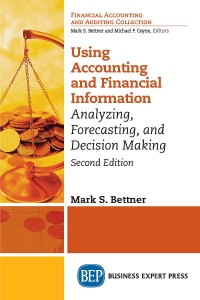Return Required information The following information applies to the questions displayed below.] Warnerwoods Company uses a perpetual inventory system. It entered into the following purchases and sales transactions for March Date March 1 March 5 March 9 March 18 March 25 March 29 Units Acquired at Cost 100 units @ $51.00 per unit 225 units @ $56.00 per unit Units Sold at Retail Activities Beginning inventory Purchase Sales Purchase Purchase Sales Totals 260 units @ $86.00 per unit 85 units @ $61.00 per unit 150 units @ $63.00 per unit 560 units 130 units @ $96.00 per unit 390 units Required: . Compute cost of goods available for sale and the number of units available for sale. Answer is complete and correct. Cost of Goods Available for Sale # of units Cost per Cost of Goods Unit Available for Sale 100$ 51.00 IS 5,100 225 Beginning inventory Purchases March 5 March 18 March 25 Total 00 85 56.00 61.00 63.00 150 560 12,600 5.185 9,450 32,335 $ Required information The following information applies to the questions displayed below) Wamerwoods Company uses a perpetual inventory system. It entered into the following purchases and sales transactions for March Units Sold at Retail Date March 1 March 5 March 9 March 18 March 25 March 29 Activities Beginning inventory Purchase Sales Purchase Purchase Sales Totals Units Acquired at Cost 100 units @ $51.00 per unit 225 units @ $56.00 per unit 85 units @ $61.00 per unit 150 units @ $63.00 per unit 260 units @ $86.00 per unit 130 units @ $96.00 per unit 390 units 560 units 2. Compute the number of units in ending inventory Ending inventory units Compute the cost assigned to ending inventory using FIFO. Goods Purchased Date Perpetual FIFO Cost of Goods Sold Cost per Cost of Goods Sold of units Cost per unit of units sold March 1 unit Inventory Balance Inventory of units unit Balance 100 at $ 51.00 = $ 5,100.00 Cost per March 5 Total March 5 March 9 Total March 9 March 18 Total March 18 March 25 Total March 25 March 29 Total March 29 Totals Compute the cost assigned to ending inventory using LIFO. Date Goods Purchased Cost per # of units unit Perpetual LIFO: Cost of Goods Sold # of units sold Cost of Goods Sold unit Cost per Inventory Balance Cost per Inventory of units unit Balance 100 at $ 51.00 - $ 5,100.00 March 1 March 5 Total March 5 March 9 Total March 9 March 18 Total March 18 March 25 Total March 25 March 29 Total March 29 Totals Perpetual FIFO Perpetual LIFO Weighted Average Specific Id Compute the cost assigned to ending inventory using weighted average. (Round your average cost per unit to 2 decimal places.) Weighted Average Perpetual: Goods Purchased Cost of Goods Sold Inventory Balance Cost per of units of units unit Cost per sold Cost per unit Cost of Goods Sold # of units unit Inventory Balance March 1 100 at $ 51.00 - $ 5,100.00 Date March 5 Average March 5 March 9 March 18 Average March 18 March 25 Average March 25 March 20 Totals Perpetual FIFO Perpetual LIFO Weighted Average Specific Id Compute the cost assigned to ending inventory using specific identification. For specific identification, units sold include 65 units from bu 5 purchase, 45 units from the March 18 purchase, and 85 units from the March 25 purchase. Specific Identification: Goods Purchased Cost of Goods Sold Inventory Balance Date Cost Goods of units # of units Cost Cost of Goods Cost Inventory per unit Puchased #of units sold Sold Balance March 1 100 at $51.00 $ 5,100 at $ 51.00 $ 51.00 March 5 225 at $56.00 12,600 at $56.00 at $ 56.00 = March 18 85 at $61.00 5.185 at $61.00 at $ 61.00 = March 25 150 at $ 63.00 $ 9,450 $63.00 at Totals per unit per unit at ### at Warnerwoods Company uses a perpetual inventory system. It entered into the following purchases and sales transactions for March Units Sold at Retail Date March 1 March 5 March 9 March 18 March 25 March 29 Units Acquired at Cost 100 units @ $51.00 per unit 225 units @ $56.00 per unit Activities Beginning inventory Purchase Sales Purchase Purchase Sales Totals 260 units @ $86.00 per unit 85 units @ $61.00 per unit 150 units @ $63.00 per unit 560 units 130 units @ $96.00 per unit 390 units 4. Compute gross profit earned by the company for each of the four costing methods. For specific identification, units sold include 65 units from beginning inventory, 195 units from the March 5 purchase, 45 units from the March 18 purchase, and 85 units from the March 25 purchase. (Round weighted average cost per unit to two decimals and final answers to nearest whole dollar.) Gross Margin FIFO LIFO Weighted Average Specific ID Sales Less: Cost of goods sold Gross profit













